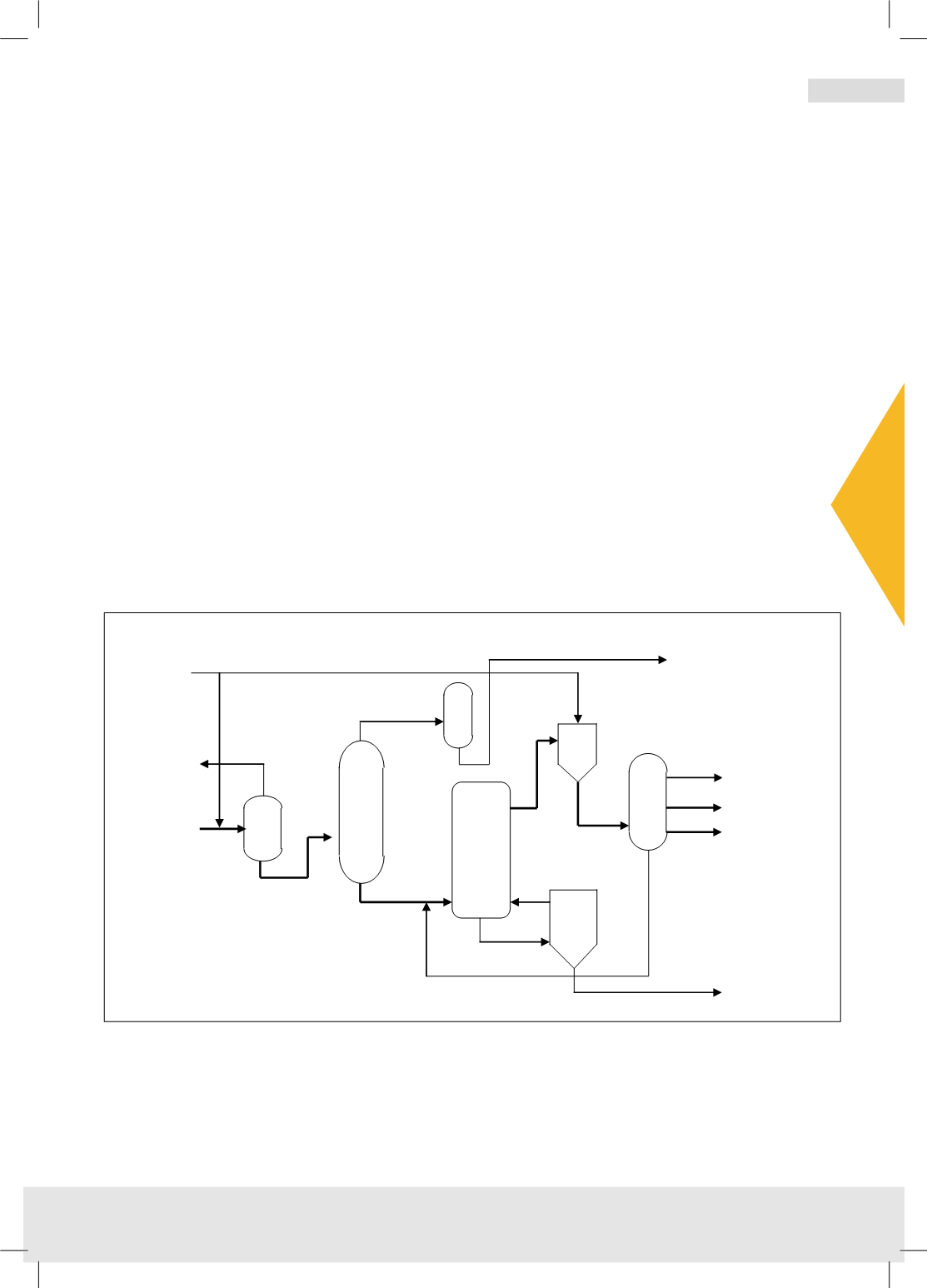

البحـث الثاني
165
2016
أوابك العلمية لعام
�
ص لبحوث العلمية الفائزة بجائزة
�
عدد خا
مجلة النفط والتعاون العربي
161
العدد
- 2017
أربعون
المجلد الثالث و ال
Re-refining of Used Lubricating Oil and its Economic and Environmental Implications
42
where gas oil is removed from the oil under vacuum, then condensed and stored for
eventual reuse.
Vacuum distillation:
In this section the lubricating fractions contained in the used oil are distilled out under
high vacuum conditions: The stripped oil is delivered to a distillation column coupled
with a thin film evaporator where it is distilled under high vacuum. This operation
results in a distillate and a bottom asphaltic residue where heavy metals, chemical
additives, polymers and degraded products are concentrated. The residue is stored then
reused for other ends. The unflashed oil flows under gravity to the thin film evaporator.
The flash vapours generated in the evaporator flow to the distillation column where
they are fractionated into light and heavy distillates.
The simplified process flow diagram is shown in figure 24.
4.17.2
Process features and drawbacks
In this process no finishing step is required hence a decrease in the investment cost but
a low quality product. The process is based on KTI technology which was modified by
Sotulub which operates a 16000 tons/y plant in Tunisia.
Figure 24 SOTULUB simplified process flow diagram
Source: Sotulub
Heavy Base Oil
Gas Oil Drum
Thin Film
Evaporator
Fractionation
Column
Water + Light
Hydrocarbons
Flash drum
Vacuum Distillation
Used oil
Antipoll
Gas Oil
Gas Oil
Light Base Oil
Residue
Gas Oil Stripper
















